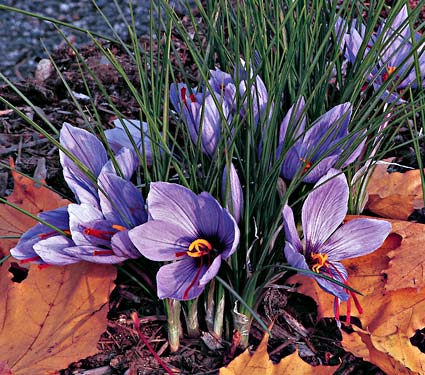How to Grow Saffron Crocus at Home

Saffron crocus is an attractive, perennial herb, that has blossoms of beautiful lavender or purple flowers in winter, when almost all other flowering and non-flowering plants have declined. It also makes one of the world’s most expensive spices, and runs about $500 a pound. Trim the colourful stamens of your saffron crocus when it is in bloom and use them in different recipes, including Seafood Paella, Golden Saffron Cake and Saffron Rice. You can also dry these stamens for future use.
Things Required:
– Saffron crocus bud or crom
– Pruning saw
– Compost or peat moss
– Water
Instructions
-
1
Get a saffron crocus bulb
Saffron crocus is best started from bulb, so visit your local nursery or garden centre to get a good quality crocus bud. You can also order a crocus bud from a gardening catalogue. -
2
Decide the location
Saffron crocus grow well in rich soil that drains well. To increase the fertility of your soil, mix in some compost, peat moss or organic material such as leaves, ground bark or decomposed manure. Also decide a location that gets full sun or very light shade. Saffron crocus can be grown as perennial plants in hardiness zones six and above; however, in zones below six, your plant may not tolerate the winters. -
3
Plant your bud
The best time to grow a saffron crocus is during late winters or spring. If you will plant a crom (the bud) in winter, the crocus will develop the following spring. Dig a 3 to 4 inch deep hole and put the crocus bud into it, with the roots pointing downward. Since one crocus plant produces only a small amount of saffron, it is recommended you plant an entire row of saffron crocus, maintaining a distance of 4 to 5 inches between two buds. Once you have planted the bud, water the garden bed thoroughly. -
4
Water your plant
Saffron crocuses prefer a moderately moist medium during fall and spring but do best in dry soil during the summer months, when they are dormant. However, once they come to life in late autumn, water the plants occasionally to keep the soil from drying out completely.





